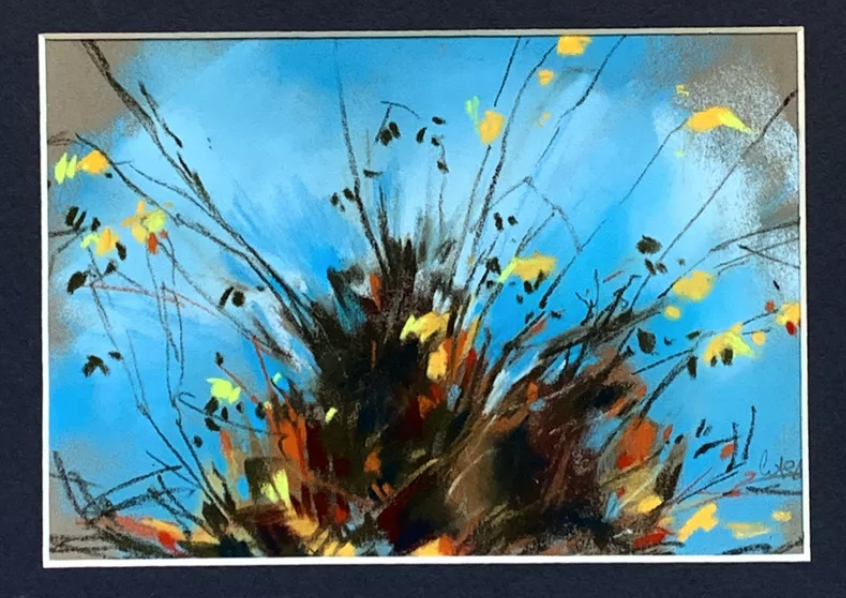Making Altars out of Stumps
The first person who taught me how to make altars out of stumps may have been Mary Oliver. Oliver’s poetry is known for its compelling mix of spirituality, natural imagery, contemplation, and sensuality. She is able to see the sacred in the world around us in a way that helped me redefine and reorient church as a Catholic looking for more liberated, more intimate, more imaginative understandings of liturgy than the rigid definitions that I grew up with.
In one of the first poems of hers that deeply resonated with me, Oliver writes:
“Love, love, love, it was the
core of my life, from which, of course, comes
the word for the heart. And, oh, have I mentioned
that some of them were men and some were women
and some—now carry my revelation with you—
were trees. Or places. Or music flying above
the names of their makers. Or clouds, or the sun
which was the first, and the best, the most
loyal for certain, who looked so faithfully into
my eyes, every morning. So I imagine
such love of the world—its fervency, its shining, its
innocence and hunger to give of itself—I imagine
this is how it began.”
In another poem, she prays, “God, rest in my heart and fortify me, take away my hunger for answers, let the hours play upon my body like the hands of my beloved. Let the cathead appear again—the smallest of your mysteries… in the black dinner-bowl of the pond.”

Pastel drawing
by Sophie Rodionov
It was astonishing to me to read someone so unafraid to disclose the spiritual nature of her sexuality, or the sensual nature of her spirituality. In these poems, Oliver locates the sacred and the divine within the small, simple moments: a lover’s hands on her body, the sun and the clouds, the cathead in the pond. She makes altars out of stumps.
As someone who strives to see priestliness in all types of gendered, embodied realities in the here-and-now, while oppressive structures create limits and power imbalances, I find great hope and pleasure in realizing that liturgy is much more wild than I had previously imagined. To me now, liturgy is my beautiful walk along the lake on a crisp, fall day. It is reading and walking with women from the past and the present who do theology from feminist, anti-racist, and queer positions. Liturgical practice can be the sacredness of gathering in community—moments when I am struck in some way with awe or gratitude for connection to myself, nature, and others.
With Oliver as my spiritual guide, I am now often in search of moments that make me say, “Now that is good liturgy.” As a Catholic, I do value the familiarity of the Eucharistic celebration—it makes me feel like I am part of a people and a tradition. I also wonder if the ability to see the altar in the tree stump is one of the prophetic gifts of marginal Catholicism, and I am excited about the mystification this gift offers our Eucharistic liturgies and our understanding of being and doing church together.
When I was studying theology in the San Francisco Bay Area, I was accompanied by beautiful and unreal sunsets that every day seemed to be more impressive than the last. It became my practice to spend moments in gratitude for these natural images that became my definition of holiness. When a lot of the work of liberation for women and queer people within the Catholic Church remains on the horizon, I find it important to recognize that it is impossible to domesticate God. Good liturgy, redefined and reoriented, can be found all around us. Our poets, prophets, priests, and saints, including Oliver, help us to understand this.
For Catholics, this intimate, liberated, imagined liturgy makes claims back onto our Eucharistic celebrations—most obviously calling for the destruction of structures of power that prevent the ordination of women and people of all genders. While we work toward realizing justice in the church, I invite us to pause for a moment in thanks and gratitude for women and those on the margins of the church who are already doing the priestly work of creating good liturgy, of helping us to celebrate the sensual and natural beauty in the small moments of our lives. Of seeing the altars in the stumps.

3 Responses
This is a delightful post, Barb. Your reflections are really useful, and now I want to go out and read a bunch of Mary Oliver!
I think that JP2’s Theology of the Body can be extended to all genders.
Lovely reflection, Barbara. Tying the natural world with liturgy is so creative.